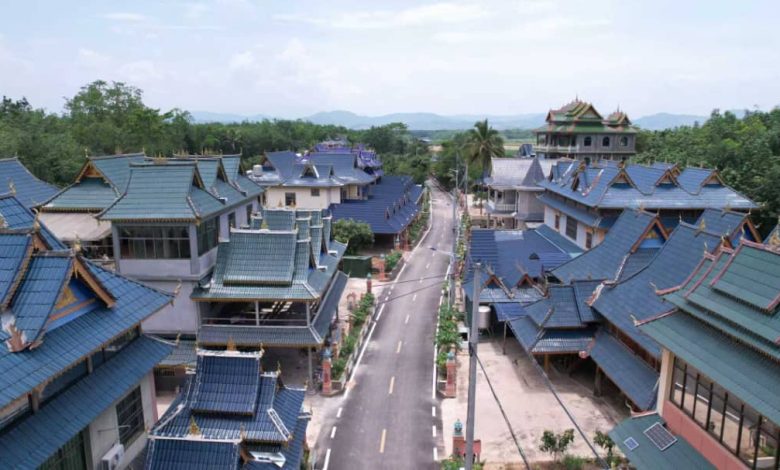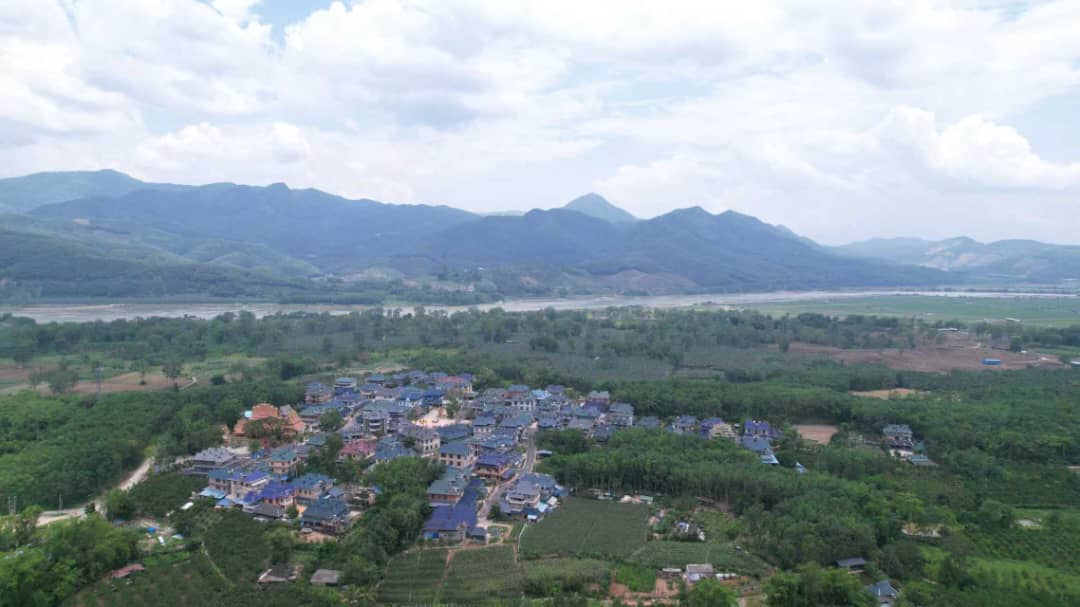Yunnan shows power of China’s rural revitalisation

CHINA: NESTLED within the emerald hills of Yunnan Province, Manluan Dai Village in Menghan Town, Jinghong City, Xishuangbanna Dai Autonomous Prefecture, unfolds as a vibrant tapestry of tradition and modernity.
From July 3 to 12 this year, as an international student from Tanzania pursuing my studies at China Agricultural University, I had the honor of being selected for the special summer school on global development, country, and region studies, themed ‘New Developmentalism and the Global South’.
The immersive programme culminated in a practical field visit and study tour to Yunnan, where I witnessed firsthand the transformative power of China’s rural revitalization. In Manluan Dai Village, ancient Dai cultural practices thrive alongside forward-looking innovation, creating a harmonious balance between preservation and progress.
From my perspective as a Tanzanian observer, the village embodies resilience, creativity, and hope. It tells a profound story of cultural continuity interwoven with sustainable development—an inspiring model of how a rural community can embrace modernity without losing its soul. This tale of revitalization carries lessons that transcend China’s borders, offering invaluable insights for the Global South and beyond.

My insights into Manluan Dai Village were deeply enriched by the foundational knowledge gained from Professor Tang’s lecture at China Agricultural University, during this summer school program and on her lecture titled “Translating Experience into Actions: China Agricultural University’s Development Practices in China and Beyond.”
As Deputy Dean of the College of Intellectual Development and Global Agriculture, Professor Tang drew from over 30 years of expertise, sharing China’s rural transformation story since 1980 through personal tales and visual aids that highlighted the stark contrasts between urban and rural life.
She emphasized that “understanding the rural areas is important to truly grasp China’s development, as rural villages offer a unique perspective on the country’s progress.”
Her hands-on work in poverty alleviation across 50 villages in various provinces, navigating challenges like steep terrain in places such as Bucha, underscored the need for pragmatic, contextsensitive approaches that prioritize local creativeness and sustainable maintenance.
This lecture not only mirrored the evolving identity of global development but also reinforced the imperative of international collaboration, as evidenced by her recent participation in a UN conference in New York, urging a shift from externally imposed solutions to those rooted in lived realities and mutual understanding.
A village rooted in a time
Manluan Dai Village is a living archive of the Dai people’s heritage. For centuries, its residents have tilled the land, growing crops like Chinese prickly ash, peaches, and apples, suited to the region’s fertile soil.
Their traditional farmingreading culture, a blend of agricultural labor and scholarly pursuit, has long defined their identity. Walking through the village, you can almost hear the echoes of ancient Buddhist scriptures preserved on handmade Dai paper, a craft that has thrived here for generations. Yet, this is no static picture.
Manluan Dai Village is a place of change, where the past and future converge. As I peer through the metaphorical window of my studies, I see a community weaving its rich traditions into a modern tapestry of progress, guided by China’s ambitious Rural Revitalization Strategy.
The OVUOUS Programme & China Agricultural University (CAU) as seeds of changes
At the heart of Manluan’s transformation is the “One Village, One University Student” (OVOUS) program, launched in 2004 by the China’s Ministry of Education and primarily implemented through open universities, focuses on providing higher education and specialized training in agricultural techniques to rural residents.
And second is the 2023 framework agreement between China Agricultural University (CAU) and Xishuangbanna for rural revitalization.
CAU has engaged in complementary rural development efforts since 2015, it has conducted poverty alleviation and revitalization projects in Autonomous Xishuangbanna Prefecture, Dai Yunnan Province, including in villages like Hebian Cun in Mengla County.
These initiatives involve research, technology transfer, and community support to enhance agricultural productivity, economic resilience in rubber farming), and human wildlife coexistence (human-elephant relations), aligning with national rural revitalization goals. Builds on this foundation, formalizing partnerships to advance agricultural modernization and sustainable development in the region.
This reflects OVOUS’s emphasis on talent cultivation which is seen through CAU’s “Science and Technology Backyard” (STB) model, where graduate students and professors live in villages to provide on-site training, research, and innovation in farming practices.
This initiative is like a seed planted in fertile soil, creating opportunity for local farmers. By providing education and training in modern agricultural techniques, where through OVOUS it has empowered villagers to form large scale professional households, family farms, and cooperatives.
These efforts have shifted farming from subsistence to a more industrialized, efficient model, boosting yields and incomes.
Where on the other hand China Agricultural University through Farmers centered rural development approach, the program has addressed idle rural resources, mono industries and weak income growth faced by rural residence.
A tapestry of tradition and innovation
Manluan’s revitalization is not solely about agriculture. The village has diversified its economy, blending traditional crafts with modern industries.
The Dai method of papermaking, one of China’s oldest crafts, is a shining example. Once used to preserve sacred texts, it now produces packaging paper, handbags, and decorative items, generating millions of yuan annually under the leadership of local artisans.
Woven and embroidered bags, crafted from wool, cotton, and silk, also find eager buyers in local markets, stitching cultural pride into economic success.
Tourism, too, has become a cornerstone of Manluan’s economy. Visitors are drawn to the village’s cultural treasures, the from the vibrant water-splashing festival to serene beauty of the Xishuangbanna Dai Garden.
These attractions not only boost income but also preserve the Dai’s Bei Ye Culture, a rich mosaic of customs, oral traditions, and festivals. Yet, the village treads carefully, striving to balance tourism with environmental and cultural preservation to avoid the pitfalls of commercialization.
Building a smarter future
Manluan Dai Village is also embracing the concept of a “smart village,” integrating technology to enhance quality of life. Rural libraries, vocational schools, and improved healthcare facilities are fostering human and social capital, creating a community that is as connected as it is cohesive.
Infrastructure development, guided by policies tailored to the village’s unique needs, ensures sustainable growth. From better roads to renewable energy initiatives, like solar projects inspired by nearby Jinzhai County, Manluan is building a foundation for long-term prosperity.
As a Tanzanian, I see parallels with rural communities back home, where access to education and infrastructure could unlock similar potential. Manluan’s story offers a blueprint. Progress doesn’t have to erase tradition, it can amplify it.
Environmental sustainability remains a concern, as the village struggles with the impact of agricultural expansion and tourism. Efforts like returning farmland to forests and controlling pollution are critical to preserving the natural capital that underpins Manluan’s prosperity.
Social challenges also persist, particularly gender disparities. While women play a vital role in agriculture and handicrafts, wage gaps and educational inequities linger, despite progress in female college enrollment.
Critics of rural revitalization argue that initiatives like Manluan’s risk becoming superficial if they fail to address these deeper issues. The concept of post-productivism focusing on social and environmental vitality rather than just economic output warns against “greenwashing” rural development. Manluan must navigate these complexities to ensure its transformation is equitable and sustainable.
Tanzania, where agriculture employs about 65-70 percent of the workforce and contributes roughly 25 30 percent to GDP, faces challenges similar to those China addressed through programs like OVOUS and the CAUXishuangbanna partnership, including subsistence farming, low productivity, limited access to modern techniques, climate vulnerabilities, and rural-urban migration.
By adapting elements from these Chinese initiatives which emphasize education, technology transfer, and localized partnerships Tanzania could accelerate its rural revitalization under frameworks like the Agricultural Sector Development Programme (ASDP) and the National Strategy for Growth and Reduction of Poverty.
China’s long-standing engagement in Tanzania, dating back to the 1960s with aid and more recently through demonstration centers, provides a practical foundation for these lessons. Invest in Localized Agricultural Education and Talent Cultivation: OVOUS’s model of training one university-level student per village in modern techniques could inspire Tanzania to expand programs like the “One Village, One Agricultural Extension Officer” or integrate higher education into rural communities via distance learning and adult education.
This would build grassroots expertise, reduce brain drain, and empower farmers to lead cooperatives, as seen in China’s shift from subsistence to efficient farming.
Tanzania could partner with institutions like Sokoine University of Agriculture to replicate CAU’s ‘Science and Technology Backyard’ approach, where experts live in villages for hands-on training, addressing local gaps in skills for crops like maize, rice, and cashews.
Manluan Dai Village is more than a case study; it’s a story of hope and balance. It shows how a community can honor its roots while reaching for the future, blending tradition with innovation to create a vibrant, sustainable economy.
This village is a reminder that progress is not a onesize-fits-all model. It requires listening to local voices, respecting cultural heritage, and addressing systemic challenges like poverty and inequality.





